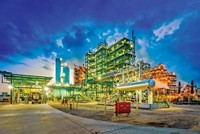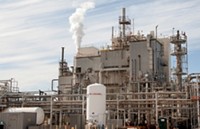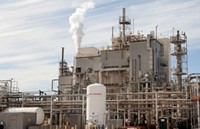Advertisement
Grab your lab coat. Let's get started
Welcome!
Welcome!
Create an account below to get 6 C&EN articles per month, receive newsletters and more - all free.
It seems this is your first time logging in online. Please enter the following information to continue.
As an ACS member you automatically get access to this site. All we need is few more details to create your reading experience.
Not you? Sign in with a different account.
Not you? Sign in with a different account.
ERROR 1
ERROR 1
ERROR 2
ERROR 2
ERROR 2
ERROR 2
ERROR 2
Password and Confirm password must match.
If you have an ACS member number, please enter it here so we can link this account to your membership. (optional)
ERROR 2
ACS values your privacy. By submitting your information, you are gaining access to C&EN and subscribing to our weekly newsletter. We use the information you provide to make your reading experience better, and we will never sell your data to third party members.
Safety
Investigation: Feds cite safety lapses, mechanical failures in fatal DuPont accident in Texas
by Glenn Hess
December 18, 2014
| A version of this story appeared in
Volume 92, Issue 51
Mechanical problems and ineffective safety practices were likely factors in the chemical leak that killed four workers last month at DuPont’s complex in La Porte, Texas, federal authorities say.
The U.S. Chemical Safety & Hazard Investigation Board (CSB), which investigates chemical accidents, points to problems with the vent system in the building where the release of 23,000 lb of toxic methyl mercaptan originated on Nov. 15.
In addition, DuPont “did not effectively implement good safety practices” that require workers to wear air respirators and other protective equipment, CSB alleges in preliminary findings.
On the basis of its internal review, DuPont says that CSB’s description of the circumstances “leading to the release of methyl mercaptan from the vent header system is the most likely scenario.” But the company adds that it “does not necessarily agree with other aspects of CSB’s statement.”
According to CSB, the leak occurred after an unplanned shutdown of the methomyl production unit. Methomyl is the active ingredient in DuPont’s Lannate brand insecticide. The agency found that workers were unable to restart the unit because supply piping from a methyl mercaptan storage tank was plugged.
“It is likely that methyl mercaptan inadvertently entered the interconnected process vent system inside the building,” CSB says. The release occurred through a valve that was opened as part of a routine effort to drain liquid from the vent system to relieve pressure.





Join the conversation
Contact the reporter
Submit a Letter to the Editor for publication
Engage with us on Twitter